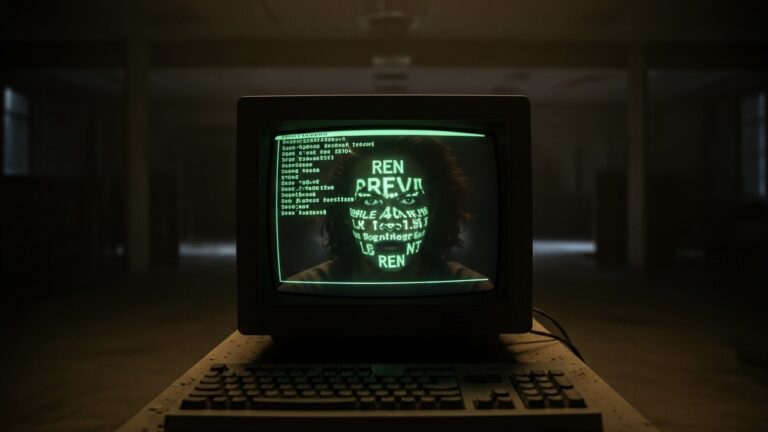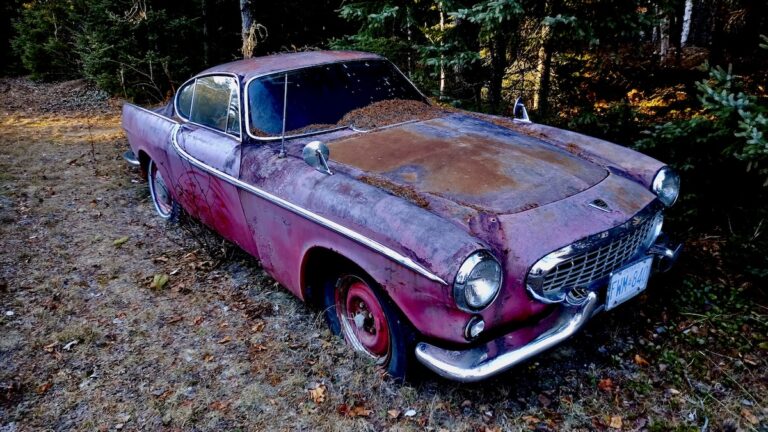
Learn how to make a 3D music visualizer developed using three.js. Bouncing equalizer bars, orbiting camera, and cosmic stars merge sound and art.
Youth Artists and Musicians Transform Sound into Bouncing Equalizer Bars and Cosmic Starscapes with Three.js
A burst of creative energy is lighting up our screens as part of our 2025 Winter Arts Incubator Program. Musicians and visual artists have joined forces, supported by funding from the OpenAI Researcher Access Program and the Manitoba Arts Council, to explore new ways of experiencing sound through light and motion. This year, we’ve been learning how to transform music with a vibrant 3D equalizer where bouncing bars, swirling stars, and an orbiting camera create an immersive, kinetic visualization of every beat.
Many people assume that this project is all about coding, but it’s much more than that. With the help of AI tools from OpenAI, we use “robot assistants” to generate the code, which frees us to focus on the creative aspects of our work. This approach teaches us to learn the necessary techniques ourselves while encouraging us to innovate. In reality, it took hours to compose the music—an exercise in creativity and emotion—while the equalizer code was generated in not even a few minutes. Along the way, we’re also learning invaluable lessons about digital arts, interactivity, design, and creating experiences that merge art and technology.
In this interactive display, three concentric rings of colored bars respond dynamically to different ranges of musical frequencies. As the music pulses through the speakers, each bar bounces with energy and then gently falls back, creating an exhilarating visual rhythm that mirrors the progression of the song. An auto-rotating camera offers a continuously shifting perspective, allowing viewers to experience the digital symphony from every angle, while a star field in the background adds a cosmic sense of wonder.
The project harnesses the power of three.js to bring these stunning effects to life on the web. Using advanced animation techniques that mimic spring-like bounces and graceful decays, together, we crafted an environment where art and music collide in real time. Every element—from the interactive splash screen featuring logos of our supporting organizations to the replay and next song options—reflects a commitment to making creative technology accessible and engaging.
This easy-to-do project is just one of many innovative activities we learned about this season. We’ve had a lot of fun working with artists and musicians who are eager to push the boundaries of traditional art and performance. We invite others to explore, experiment, and create their own interactive installations—proving that with a bit of code and a lot of imagination, anyone can turn music into a truly visual adventure without having to spend lots of time writing code!
Enjoy the journey into this electrifying fusion of visuals and sound and get inspired to create your own artistic adventures.
Here is the code for making the equalizer. You can try it out by clicking here.
<!DOCTYPE html>
<html lang="en">
<head>
<meta charset="UTF-8">
<title>Equalizer – Falling Bars, Orbiting Camera, Stars & Splash</title>
<style>
body {
margin: 0;
overflow: hidden;
background: #000;
color: #fff;
font-family: sans-serif;
}
/* Splash screen overlay */
#overlay {
position: fixed;
inset: 0;
background: url('splash.jpeg') center/cover;
display: flex;
flex-direction: column;
align-items: center;
justify-content: center;
z-index: 10;
text-shadow: 0 0 5px #000;
padding: 20px;
}
/* A two-column row for logos inside the splash screen */
.logo-row {
display: flex;
flex-direction: row;
justify-content: space-around;
align-items: center;
width: 50%;
margin: 20px 0;
}
.logo-row img {
max-width: 40%;
height: auto;
object-fit: contain;
}
/* START button styling for splash screen */
#overlay button {
padding: 16px 32px;
font-size: 28px;
border: none;
border-radius: 8px;
background: #000a;
color: #fff;
cursor: pointer;
margin: 20px 0;
}
/* Media query to increase button size on mobile */
@media (max-width: 600px) {
#overlay button {
padding: 20px 40px;
font-size: 32px;
}
}
/* Replay overlay container */
#replayOverlay {
position: fixed;
inset: 0;
pointer-events: none;
display: flex;
flex-direction: column;
justify-content: center;
align-items: center;
z-index: 5;
background: transparent;
}
/* Styling for buttons in the replay overlay */
#replayOverlay button {
pointer-events: auto;
padding: 16px 32px;
font-size: 28px;
background: #000a;
color: #fff;
border-radius: 8px;
border: none;
cursor: pointer;
margin: 10px;
}
/* Hide the built-in play button */
#playBtn {
display: none;
}
</style>
</head>
<body>
<!-- Splash Screen Overlay -->
<div id="overlay">
<h1>Song 2</h1>
<button onclick="start()">START</button>
<p>Music by Tony Eetak</p>
<p><br/><br/>A project supported by:</p>
<!-- Two-column row for logos -->
<div class="logo-row">
<img src="manitoba-arts-council-logo.png" alt="A Project supported by the Manitoba Arts Council">
<img src="powered-by-openai-badge-filled-on-dark.png" alt="A Project Made Possible with support from the OpenAI Researcher Access Program">
</div>
</div>
<!-- Replay Overlay (hidden initially) -->
<div id="replayOverlay" style="display:none;">
<button onclick="replay()">Replay Song</button>
<button onclick="nextSong()">Next Song</button>
</div>
<!-- A hidden built-in play button (unused) -->
<button id="playBtn">Play Music</button>
<!-- Load Three.js r128 -->
<script src="https://cdnjs.cloudflare.com/ajax/libs/three.js/r128/three.min.js"></script>
<!-- Load OrbitControls -->
<script src="https://cdn.jsdelivr.net/npm/three@0.128.0/examples/js/controls/OrbitControls.js"></script>
<script>
/*
This version creates an equalizer with three rings of bouncing bars,
an orbiting camera, and a distant star field.
When the page loads, a splash overlay with a title, a two‑column logo row,
a large START button, and credits is displayed.
When the song ends, a replay overlay appears with two buttons: one to replay
the current song and another ("Next Song") that sends the user to "/music/song1".
*/
// GLOBAL VARIABLES
let scene, camera, renderer, controls;
const numBars = 32; // per ring
const lowBars = [], midBars = [], highBars = [];
const lowRadius = 80, midRadius = 160, highRadius = 240;
// AUDIO VARIABLES
let audioCtx, analyser, audioBuffer, audioSource;
let playing = false;
let freqData;
const FFT_SIZE = 1024; // yields 512 bins
const totalBlocks = numBars * 3;
// Equalizer parameters
const gainLow = 150;
const gainMid = 150;
const gainHigh = 400;
const alpha = 8;
const lowMaxHeight = 60;
const midMaxHeight = 60;
const highMaxHeight = 80;
// SPRING/DAMPER parameters (active & fall-down)
const springStrength = 0.5;
const damping = 0.08;
// BOUNCE parameters (active only)
const bounceFrequency = 5;
const bounceAmplitudeFactor = 0.5;
init();
animate();
function init(){
// Setup scene, camera, renderer.
scene = new THREE.Scene();
scene.background = new THREE.Color(0x000000);
camera = new THREE.PerspectiveCamera(60, window.innerWidth/window.innerHeight, 1, 4000);
camera.position.set(0, 300, 400);
renderer = new THREE.WebGLRenderer({antialias: true});
renderer.setSize(window.innerWidth, window.innerHeight);
document.body.appendChild(renderer.domElement);
// Setup OrbitControls with autoRotate.
controls = new THREE.OrbitControls(camera, renderer.domElement);
controls.autoRotate = true;
controls.autoRotateSpeed = 2.0;
// Lighting.
scene.add(new THREE.AmbientLight(0x444444));
const directionalLight = new THREE.DirectionalLight(0xffffff, 0.8);
directionalLight.position.set(1, 1, 1);
scene.add(directionalLight);
// Optional grid helper.
const gridHelper = new THREE.GridHelper(600, 30, 0x444444, 0x222222);
scene.add(gridHelper);
// Create equalizer rings.
createRing(lowBars, numBars, lowRadius, 240, 0, gainLow);
createRing(midBars, numBars, midRadius, 120, 60, gainMid);
createRing(highBars, numBars, highRadius, 280, 180, gainHigh);
lowBars.forEach(bar => scene.add(bar));
midBars.forEach(bar => scene.add(bar));
highBars.forEach(bar => scene.add(bar));
// Add star field.
const stars = createStarField(1000);
scene.add(stars);
// Setup audio context and analyser.
audioCtx = new (window.AudioContext || window.webkitAudioContext)();
analyser = audioCtx.createAnalyser();
analyser.fftSize = FFT_SIZE;
freqData = new Uint8Array(analyser.frequencyBinCount);
// Load audio file (update URL as needed).
fetch('song-4.m4a')
.then(response => response.arrayBuffer())
.then(arrayBuffer => audioCtx.decodeAudioData(arrayBuffer))
.then(decodedData => { audioBuffer = decodedData; });
window.addEventListener('resize', onWindowResize, false);
}
// createRing builds a ring of bars arranged in a circle.
function createRing(arr, count, radius, baseHue, targetHue, gain) {
for (let i = 0; i < count; i++){
const geometry = new THREE.BoxGeometry(10, 1, 10);
geometry.translate(0, 0.5, 0);
const material = new THREE.MeshPhongMaterial({ color: new THREE.Color().setHSL(baseHue/360, 1, 0.5) });
const bar = new THREE.Mesh(geometry, material);
const angle = (i / count) * 2 * Math.PI;
bar.position.x = Math.cos(angle) * radius;
bar.position.z = Math.sin(angle) * radius;
bar.rotation.y = -angle;
bar.userData = {
baseHue: baseHue,
targetHue: targetHue,
gain: gain,
velocity: 0,
phase: Math.random() * Math.PI * 2
};
arr.push(bar);
}
}
// createStarField generates a point-based star field in a spherical shell.
function createStarField(starCount) {
const geometry = new THREE.BufferGeometry();
const positions = [];
const minRadius = 800, maxRadius = 2000;
for (let i = 0; i < starCount; i++){
const r = THREE.MathUtils.randFloat(minRadius, maxRadius);
const theta = THREE.MathUtils.randFloat(0, Math.PI);
const phi = THREE.MathUtils.randFloat(0, Math.PI * 2);
const x = r * Math.sin(theta) * Math.cos(phi);
const y = r * Math.sin(theta) * Math.sin(phi);
const z = r * Math.cos(theta);
positions.push(x, y, z);
}
geometry.setAttribute('position', new THREE.Float32BufferAttribute(positions, 3));
const material = new THREE.PointsMaterial({ color: 0xffffff, size: 2, sizeAttenuation: true });
return new THREE.Points(geometry, material);
}
// updateEqualizer processes FFT data and updates each bar’s height and color while the song plays.
function updateEqualizer(){
analyser.getByteFrequencyData(freqData);
let overallSum = 0;
for (let i = 0; i < freqData.length; i++){
overallSum += freqData[i];
}
const overallAvg = overallSum / freqData.length;
const binsPerBlock = freqData.length / totalBlocks;
const allBlocks = lowBars.concat(midBars, highBars);
const t = performance.now() / 1000;
for (let blockIndex = 0; blockIndex < totalBlocks; blockIndex++){
const startBin = Math.floor(blockIndex * binsPerBlock);
const endBin = Math.floor((blockIndex + 1) * binsPerBlock);
let sum = 0, count = 0;
for (let j = startBin; j < endBin; j++){
sum += freqData[j] || 0;
count++;
}
const assignedAvg = count ? (sum / count) : 0;
const mixedAvg = 0.5 * assignedAvg + 0.5 * overallAvg;
let norm = 1 - Math.exp(-alpha * (mixedAvg / 255));
norm = Math.min(Math.max(norm, 0), 1);
let block, gain, maxHeight;
if (blockIndex < numBars) {
block = lowBars[blockIndex];
gain = block.userData.gain;
maxHeight = lowMaxHeight;
} else if (blockIndex < numBars * 2) {
block = midBars[blockIndex - numBars];
gain = block.userData.gain;
maxHeight = midMaxHeight;
} else {
block = highBars[blockIndex - numBars * 2];
gain = block.userData.gain;
maxHeight = highMaxHeight;
}
let targetHeight = 1 + norm * gain;
targetHeight = Math.min(targetHeight, maxHeight);
let diff = targetHeight - block.scale.y;
block.userData.velocity += diff * springStrength;
block.userData.velocity *= (1 - damping);
block.scale.y += block.userData.velocity;
if (block.scale.y < 1){
block.scale.y = 1;
block.userData.velocity = 0;
}
// Add bounce oscillation.
const bounce = Math.sin(t * bounceFrequency + block.userData.phase) * ((targetHeight - 1) * bounceAmplitudeFactor);
let finalHeight = block.scale.y + bounce;
finalHeight = Math.max(1, Math.min(finalHeight, maxHeight));
block.scale.y = finalHeight;
let hue = block.userData.baseHue + (block.userData.targetHue - block.userData.baseHue) * norm;
block.material.color.setHSL(hue/360, 1, 0.5);
}
}
// updateFallDown makes bars fall back to a baseline (height 1) when the song ends.
function updateFallDown(){
const allBlocks = lowBars.concat(midBars, highBars);
for (let i = 0; i < allBlocks.length; i++){
const block = allBlocks[i];
let diff = 1 - block.scale.y;
block.userData.velocity += diff * springStrength;
block.userData.velocity *= (1 - damping);
block.scale.y += block.userData.velocity;
if (block.scale.y < 1){
block.scale.y = 1;
block.userData.velocity = 0;
}
block.material.color.setHSL(block.userData.baseHue/360, 1, 0.5);
}
}
function animate(){
requestAnimationFrame(animate);
controls.update();
if (playing) {
updateEqualizer();
} else {
updateFallDown();
}
renderer.render(scene, camera);
}
function onWindowResize(){
camera.aspect = window.innerWidth / window.innerHeight;
camera.updateProjectionMatrix();
renderer.setSize(window.innerWidth, window.innerHeight);
}
// Called when the splash "START" button is pressed.
function start(){
document.getElementById('overlay').style.display = "none";
if (!playing && audioBuffer) {
if (audioCtx.state === 'suspended') audioCtx.resume();
audioSource = audioCtx.createBufferSource();
audioSource.buffer = audioBuffer;
audioSource.connect(analyser);
audioSource.connect(audioCtx.destination);
audioSource.start();
playing = true;
audioSource.onended = () => {
playing = false;
document.getElementById('replayOverlay').style.display = "flex";
};
}
}
// Called when the replay button is pressed.
function replay(){
document.getElementById('replayOverlay').style.display = "none";
start();
}
// Called when the Next Song button is pressed.
// Here, we simply redirect to '/music/song1'.
function nextSong(){
window.location.href = "/music/song1";
}
</script>
</body>
</html>




